Showing Spotlights 713 - 720 of 2783 in category All (newest first):
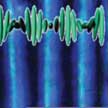 Researchers have developed a nanocoating that wipes off dust and sand from a surface by an electrical trigger, e.g. to clean solar panels in desert like conditions. This novel coating forms dynamic surface undulations fuelled by an alternating electric field. This new approach is based on resonance enhanced microscopic (di)electric coupling of polar mesogens to the electric field. Further applications could be removal of water droplets on car screens; dust removal from lenses and other optical systems; and controlling friction at or between surfaces.
Researchers have developed a nanocoating that wipes off dust and sand from a surface by an electrical trigger, e.g. to clean solar panels in desert like conditions. This novel coating forms dynamic surface undulations fuelled by an alternating electric field. This new approach is based on resonance enhanced microscopic (di)electric coupling of polar mesogens to the electric field. Further applications could be removal of water droplets on car screens; dust removal from lenses and other optical systems; and controlling friction at or between surfaces.
Feb 12th, 2018
 New work describes how to control the kinetics of ion-capturing/ion-releasing regimes in liquid crystals by means of nanoparticles. Various types of nanomaterials and alignment layers are considered major components of the next generation of advanced liquid crystal devices. While the steady-state properties of ion-capturing/ion-releasing processes in liquid crystals doped with nanoparticles and sandwiched between alignment films are relatively well understood, the kinetics of these phenomena remains practically unexplored.
New work describes how to control the kinetics of ion-capturing/ion-releasing regimes in liquid crystals by means of nanoparticles. Various types of nanomaterials and alignment layers are considered major components of the next generation of advanced liquid crystal devices. While the steady-state properties of ion-capturing/ion-releasing processes in liquid crystals doped with nanoparticles and sandwiched between alignment films are relatively well understood, the kinetics of these phenomena remains practically unexplored.
Feb 9th, 2018
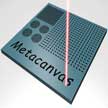 The metacanvas is a completely new generation of technology compared to all previous works. It is a tunable photonic devices based on vanadium dioxide that is lithography-free and fully reconfigurable. oth the patterns and the functionalities of the metacanvas can be arbitrarily reconfigured, which leads to many more degrees of freedom in metasurface design and functionalities. One piece of metacanvas is able to function as different optical components - hologram, phase-array, polarizer, modulator, etc. - at different times and on command, which has never been achieved in any of the previous VO2.
The metacanvas is a completely new generation of technology compared to all previous works. It is a tunable photonic devices based on vanadium dioxide that is lithography-free and fully reconfigurable. oth the patterns and the functionalities of the metacanvas can be arbitrarily reconfigured, which leads to many more degrees of freedom in metasurface design and functionalities. One piece of metacanvas is able to function as different optical components - hologram, phase-array, polarizer, modulator, etc. - at different times and on command, which has never been achieved in any of the previous VO2.
Feb 7th, 2018
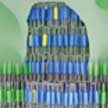 A novel approach to deliver liquids from a solid coating is both location- and time- controlled. The sponge-like coating can repeatedly absorb liquids and release them again. The type of release, either droplets or film, can be initiated by a short exposure with UV light. The uptake is accelerated by exposure with blue light. The principle of this coating is based on a photoresponsive liquid-filled smectic crystal network (LCN).
A novel approach to deliver liquids from a solid coating is both location- and time- controlled. The sponge-like coating can repeatedly absorb liquids and release them again. The type of release, either droplets or film, can be initiated by a short exposure with UV light. The uptake is accelerated by exposure with blue light. The principle of this coating is based on a photoresponsive liquid-filled smectic crystal network (LCN).
Feb 6th, 2018
 Recent research in nanofluidics has adopted reconstructed layered two-dimensional (2D) sheets (such as graphene oxide or clay) as a promising material platform for nanofluidics. These membranes contain a high volume fraction of interconnected 2D nanochannels. This nanochannel fabrication method is straightforward and scalable, and does not rely on lithography or etching. The researchers termed this process, which opens up a range of new opportunities for manipulating ionic transport by tailoring the shape of the films, kirigami nanofluidics.
Recent research in nanofluidics has adopted reconstructed layered two-dimensional (2D) sheets (such as graphene oxide or clay) as a promising material platform for nanofluidics. These membranes contain a high volume fraction of interconnected 2D nanochannels. This nanochannel fabrication method is straightforward and scalable, and does not rely on lithography or etching. The researchers termed this process, which opens up a range of new opportunities for manipulating ionic transport by tailoring the shape of the films, kirigami nanofluidics.
Feb 2nd, 2018
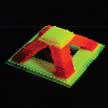 Researchers have demonstrated a new paradigm in 3D-printing by using genetically programmed living cells as active components to print living materials and devices. The living cells are engineered to light up in response to a variety of stimuli. When mixed with a slurry of hydrogel and nutrients, the cells can be printed, layer by layer, to form three-dimensional, interactive structures and devices. These printed large-scale high-resolution living materials accurately respond to signaling chemicals in a programmed manners.
Researchers have demonstrated a new paradigm in 3D-printing by using genetically programmed living cells as active components to print living materials and devices. The living cells are engineered to light up in response to a variety of stimuli. When mixed with a slurry of hydrogel and nutrients, the cells can be printed, layer by layer, to form three-dimensional, interactive structures and devices. These printed large-scale high-resolution living materials accurately respond to signaling chemicals in a programmed manners.
Jan 31st, 2018
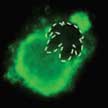 From interaction with bacteria, propulsion based on cells, in vivo medical applications to even intracellular applications, the rapidly expanding development of micro- and nanomachines with sizes comparable to or even smaller than mammalian cells, has led this field to advance from understanding of basic motion mechanisms to applications in living biosystems. A recent review highlights the recent efforts for and toward application of micro/nanomachines in living biosystems, including microorganisms, biological cells, and human body. Applications of micro- and nanomachines in living biosystems are reviewed from two aspects: their interaction with other microscopic organisms or biological units, and the efforts toward their application in the human body.
From interaction with bacteria, propulsion based on cells, in vivo medical applications to even intracellular applications, the rapidly expanding development of micro- and nanomachines with sizes comparable to or even smaller than mammalian cells, has led this field to advance from understanding of basic motion mechanisms to applications in living biosystems. A recent review highlights the recent efforts for and toward application of micro/nanomachines in living biosystems, including microorganisms, biological cells, and human body. Applications of micro- and nanomachines in living biosystems are reviewed from two aspects: their interaction with other microscopic organisms or biological units, and the efforts toward their application in the human body.
Jan 30th, 2018
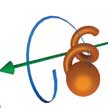 Researchers find magnetic helical nanomachines that mimic the swimming characteristics of E. coli bacteria to be particularly promising because of their extremely small size and their capability of navigating in various biological fluids like human blood. New work extends the possibility of using helical nanomachines as a tool to measure the localized mechanical properties of a heterogeneous environment that is ubiquitous in biological systems. This technique can be useful to gain valuable insights into the physiological changes of a cell in response to a disease or a drug, leading to better therapeutics.
Researchers find magnetic helical nanomachines that mimic the swimming characteristics of E. coli bacteria to be particularly promising because of their extremely small size and their capability of navigating in various biological fluids like human blood. New work extends the possibility of using helical nanomachines as a tool to measure the localized mechanical properties of a heterogeneous environment that is ubiquitous in biological systems. This technique can be useful to gain valuable insights into the physiological changes of a cell in response to a disease or a drug, leading to better therapeutics.
Jan 26th, 2018
 Researchers have developed a nanocoating that wipes off dust and sand from a surface by an electrical trigger, e.g. to clean solar panels in desert like conditions. This novel coating forms dynamic surface undulations fuelled by an alternating electric field. This new approach is based on resonance enhanced microscopic (di)electric coupling of polar mesogens to the electric field. Further applications could be removal of water droplets on car screens; dust removal from lenses and other optical systems; and controlling friction at or between surfaces.
Researchers have developed a nanocoating that wipes off dust and sand from a surface by an electrical trigger, e.g. to clean solar panels in desert like conditions. This novel coating forms dynamic surface undulations fuelled by an alternating electric field. This new approach is based on resonance enhanced microscopic (di)electric coupling of polar mesogens to the electric field. Further applications could be removal of water droplets on car screens; dust removal from lenses and other optical systems; and controlling friction at or between surfaces.
 Subscribe to our Nanotechnology Spotlight feed
Subscribe to our Nanotechnology Spotlight feed





